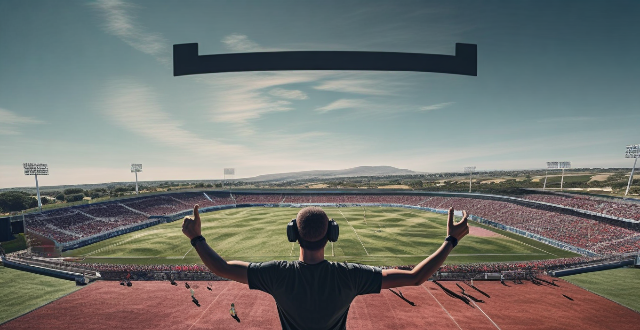The article discusses the potential applications of virtual reality (VR) in sports training, including mental rehearsal, skill development, physical training, and team building. VR can simulate game scenarios, provide immediate feedback on technique, create realistic environments for practicing skills, and facilitate collaborative training. It also offers a distraction-free environment for injury recovery and an engaging workout experience. The technology is expected to play an increasingly important role in enhancing athletic performance across various sports.

How Can Virtual Reality Be Used in Sports Training?
Virtual reality (VR) has become an increasingly popular technology in recent years, and its potential applications in sports training are vast. Here are some ways that VR can be used to enhance athletic performance:
1. Visualization and Mental Practice
- Mental Rehearsal: Athletes can use VR to mentally rehearse their performance, which has been shown to improve physical performance.
- Game Simulation: VR can simulate game scenarios, allowing athletes to practice decision-making and reaction time in a controlled environment.
- Injury Recovery: VR can also help athletes recover from injuries by providing a distraction-free environment for mental practice.
2. Skill Development
- Simulated Environments: VR can create realistic environments for athletes to practice their skills, such as skiing or surfing.
- Feedback Mechanisms: VR systems can provide immediate feedback on technique, allowing athletes to make adjustments and improve faster.
- Repetition and Drills: VR can be used for repetitive practice of specific skills or drills, helping athletes build muscle memory and refine their techniques.
3. Physical Training
- Exercising in VR: Athletes can use VR headsets while exercising, making the experience more engaging and motivating.
- Strength and Conditioning: VR can be integrated into strength and conditioning programs, providing a more immersive and engaging workout experience.
- Rehabilitation: VR can be used in rehabilitation programs, providing a safe and controlled environment for athletes to regain strength and mobility after injuries.
4. Team Building and Communication
- Collaborative Training: VR can facilitate team building exercises by allowing multiple athletes to train together in a virtual environment.
- Communication Skills: VR can simulate high-pressure situations where effective communication is crucial, helping athletes develop these skills.
- Strategic Planning: Coaches and athletes can use VR to plan strategies and tactics, visualizing different scenarios and outcomes.
In conclusion, virtual reality offers a wide range of possibilities for sports training, from mental preparation and skill development to physical training and team building. As technology continues to advance, it will likely play an increasingly important role in enhancing athletic performance across various sports.